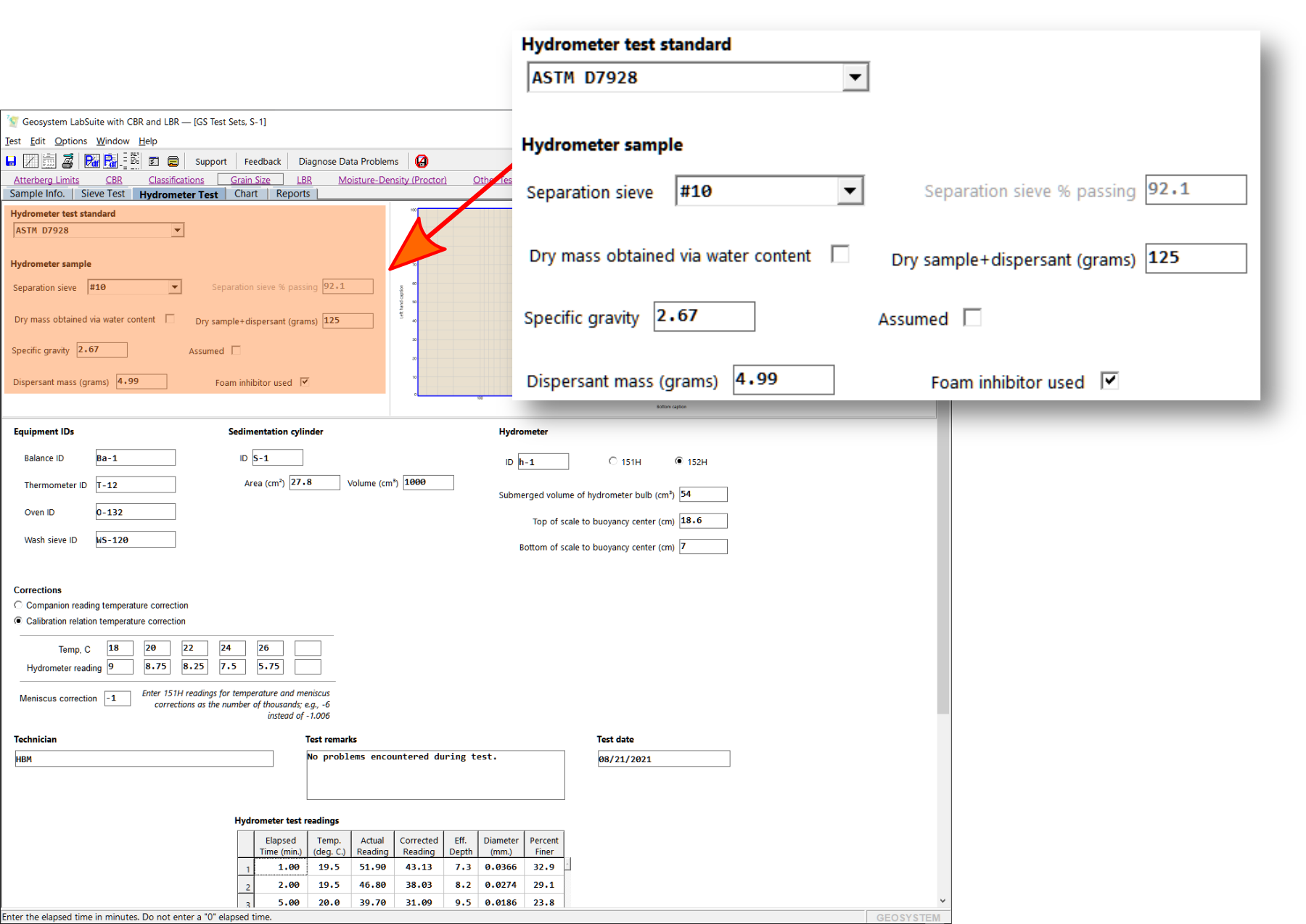The hydrometer test data entry screen may be viewed by selecting Window > Hydrometer Test, or by clicking on the Hydrometer Test navigation tab.
Test Background Information
Before entering your hydrometer test readings, you'll need to enter a little background information on the tested sample and your test procedure:

General Hydrometer Test Parameters
LabSuite supports both the newer ASTM D7928 standard, as well as the retired D422 standard, and the related AASHTO T 88 standard. Since D7928 requires a very different data set than D422 and T 88, make sure you've made the correct selection before proceeding.
The separation sieve is the sieve used to separate the material used in the sieve test from the material to be used in the hydrometer test. Typically (i.e., per ASTM D6913) the ¾, ⅜, or #4 sieve is used.
The program usually imports the separation sieve percentage from your sieve test data; however, if you didn't enter a sieve test, use this field to enter the percent finer as a number between 0 and 100.
- This field will be disabled if you've already entered a sieve test and your sieve test opening size range covers the size of sieve you selected as your hydrometer test separation sieve.
Dry mass obtained via water content
(D7928 only)
D7928 offers two options for determining the hydrometer sample dry mass: 1) using the moist sample mass and an accompanying moisture content test, divide the moist mass by 1+the water content percentage, and 2) oven-drying the sample after testing, then subtracting the dispersant mass. If you used procedure 1), check the Dry mass obtained via water content box.
(D7928 only, not available if the Dry mass obtained via water content option is selected)
If the hydrometer sample's dry mass is determined by using the wet sample mass along with a moisture content test, enter the wet hydrometer sample mass here.
(D7928 only, only available if the Dry mass obtained via water content option is not selected)
If the hydrometer sample's dry mass is determined by drying the sample post-test, enter the dried mass here.
(D422 and T 88 only)
This is the weight of the hydrometer sample, not the weight of the material passing the separation sieve.
Enter the specific gravity of the sample. Note that the specific gravity value has a large effect on the calculated percentages, so if you're assuming a value, be careful to ensure that it's actually representative of the material you're testing.
Check this box if you did not actually perform a specific gravity test on the material.
(D7928 only, only available if the Dry mass obtained via water content option is not selected)
If the hydrometer sample's dry mass is determined by drying the sample post-test, the program will need to know the mass of dispersant added to the dispersant cylinder. (The mass of the dispersant must be subtracted from the oven-dry sample mass to determine the true dry mass of the sample.)
(D7928 only)
This is an item listed in D7928's reporting requirements section. It does not affect any calculated data.
Hydrometer Equipment IDs
The Balance ID, Thermometer ID, Oven ID, and Wash sieve ID items are included due to D7928 reporting requirements. They're reported only on data summary reports, and may be left blank if you aren't required to collect and report this information.
- LabSuite automatically adds your equipment IDs to popup selection lists. You can add your own IDs to these lists, or edit or delete entries, using the instructions here
After entering (or skipping) the equipment ID section, continue on with specific instructions for the category of test data that you'll be entering: